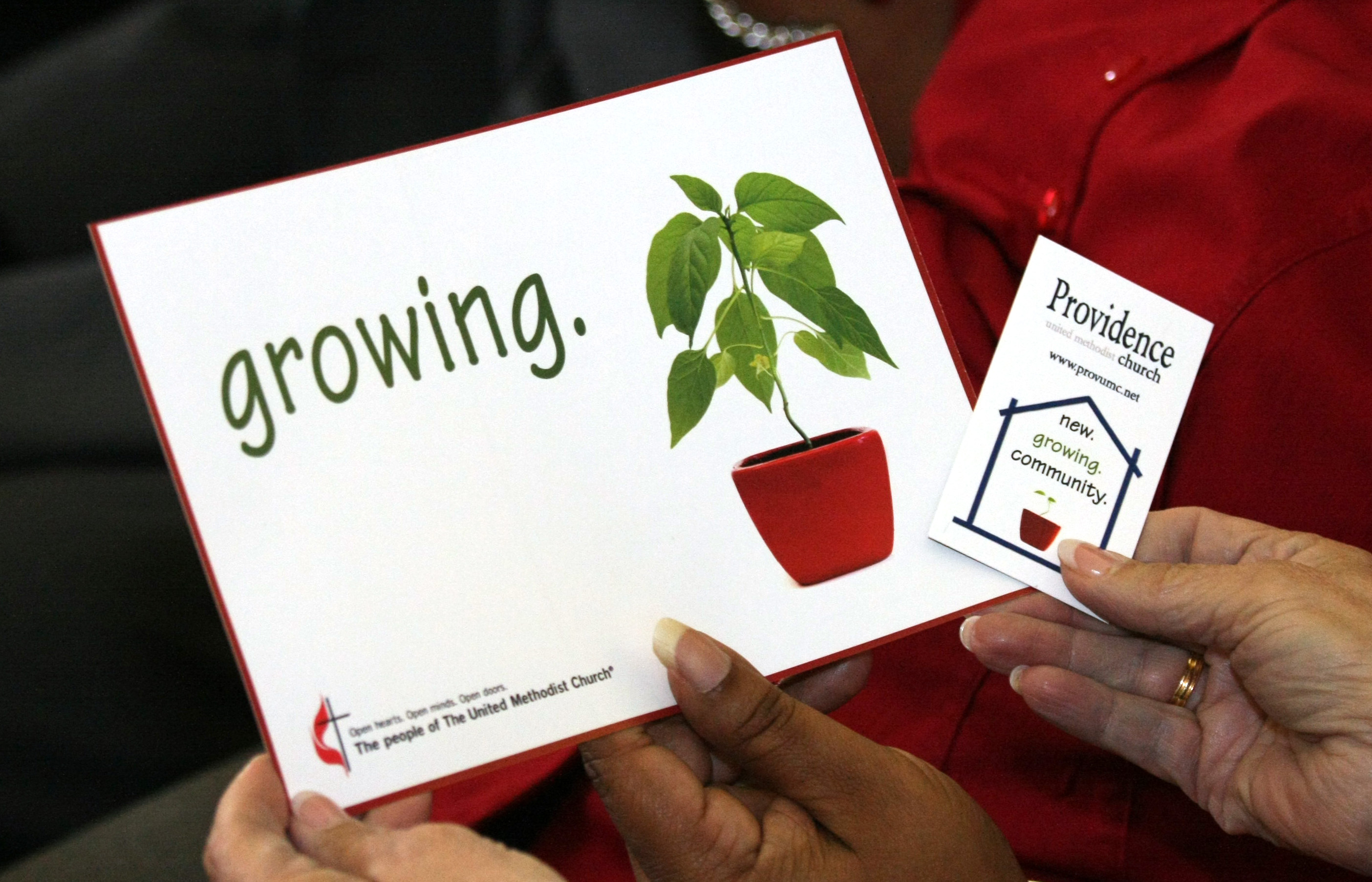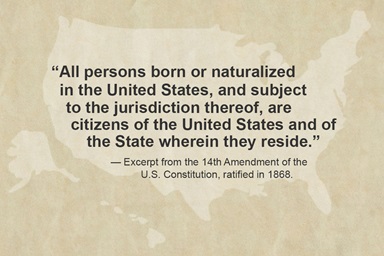If you invite them, they will come.
Just ask the Rev. Jacob Armstrong, pastor of Providence United Methodist Church in this Nashville suburb. Six years ago, the church held its first service in a city park with about 140 people. About half were visitors who came to show the support of a nearby United Methodist congregation.
Today, Providence has a regular worship attendance of about 1,000 — enough to fill a drafty middle school gym for two services even on a cold, rainy Sunday morning. Many of those worshipers are new to church.
“I think it attests that people are looking to connect with Christ and connect with each other,” Armstrong said. “What we’ve learned from new people is that people come because someone invited them.”
The young congregation is so successful it is now helping to mentor other church planters, including a pastor who started a United Methodist congregation in a neighboring town last year.
Providence is a bright spot highlighted in the Congregational Vitality Report presented to the Council of Bishops earlier this month.
The news on the vitality front is decidedly mixed.
What the numbers show
The report showed U.S. church starts are on the rise — from 116 in 2012, to 145 last year.
Factors Calculated In Vitality
To be considered “highly vital,” a congregation must be in the top 25 percent of all U.S. congregations in two of the four major areas and cannot be in the bottom 25 percent in any one of the areas.
Growth
A) Five-year change in average worship attendance, divided by five-year average of worship attendance.
B) Five-year change in person received by profession of faith and faith restored, divided by five-year average professions and faith restored.
Involvement
A) Number of people (all ages) in small groups, Bible study and Sunday school as a percent of worship attendance.
B) Number of young adults in Christian formation activities as a percentage of worship attendance.
C) Average worship attendance as a percentage of professing membership.
Engagement in the Community
A) Number of people engaged in mission as a percent of worship attendance.
B) Number of professions of faith and faith restored (who are not confirmands) as a percent of worship attendance.
Giving
A) Apportionment percentage paid for most current year.
B) Five-year change in mission giving per attendee, divided by five-year average of mission giving per attendee.
C) Five-year change in giving (defined as total non-capital local church spending) per attendee, divided by five-year average of non-capital spending per attendee.
Source: General Council on Finance and Administration
Over the past two years, 688 new faith communities have started in the denomination’s central conferences — church regions in Africa, Asia and Europe. Faith communities include small worship groups that may never grow big enough to be considered churches.
The same period saw a drop in what the denomination defines as “highly vital congregations.” Such congregations in the U.S. dipped 7 percent from 34 percent in 2012 to 27 percent in 2013.
The denomination measures a congregation’s vitality by growth, member involvement in church, engagement in the community and giving.
The recent data follows another report earlier this year that showed in 2012 a surge in U.S. vital congregations as well as an increase in professions of faith.
“We’re in a time of transition and working on turning things around,” New Jersey Area Bishop John R. Schol, a leader of the denomination’s Vital Congregations Initiative, told United Methodist News Service. “Any time you’re in transition and turnaround, you’re going to see progress and you’re going to see unevenness in the progress.”
In 2013, six U.S. conferences increased in highly vital congregations, while 47 decreased. Ten conferences increased the percentage of congregations growing in worship attendance, while 42 conferences saw declines. Overall, U.S. churches saw a 2 percent reduction in worship attendance.
Worship attendance is growing in only about a third of U.S. churches.
Still, the denomination is ahead of where it was in 2010, when it began its current focus on vital congregations. That year, only about 14.8 percent of U.S. United Methodist churches were identified as highly vital.
“We saw good progress immediately after conferences and congregations set goals,” Schol said. But he added other factors could have contributed to last year’s decrease, including clergy retirements.
To reverse decades of declining U.S. membership, Schol and other denominational leaders say United Methodists will need to maintain focus on congregational vitality. Planting churches is part of that focus.
Indeed, Schol said, new congregations are often among the most vital. They have a sense of calling, know their communities’ needs and can prioritize reaching new people for Christ.
Also, they tend to be planted where the population is growing.
Being where the people are
Providence is in Mount Juliet, a growing Nashville suburb, with residents from around the world.

A card from Providence United Methodist Church in Mount Juliet, Tenn., proclaims “Growing” which is part of the reason that the church is considered a highly vital congregation. Photo by Ronny Perry, United Methodist Communications
It began as a vision of a group of church leaders in the district who saw a need for a new United Methodist presence in the area. Armstrong, a Mount Juliet native, and his wife, Rachel, felt called to help start a new church.
“Studies show new people are drawn to new places,” Armstrong said. “If someone is moving from Indiana, that person is more likely to check us out than an older church because we’re new, they’re new. We’re all starting on the same foot.”
One of the biggest challenges the denomination has faced in recent decades is the result of Methodism’s early success. In the 19th century, the movement spread rapidly across the United States with new churches sprouting in just about every human settlement.
Today, about 60 percent of U.S. United Methodist churches are in rural communities. Problem is about 80 percent of the U.S. population now lives in urban areas.
While many rural churches are doing vital ministry, church leaders have long known growth comes where more people are.
How Path1 helps
For many decades in many conferences, planting churches was not a priority, said Fort Worth (Texas) Area Bishop J. Michael Lowry. Some conferences were planting two or three a decade rather two or three a year.
That began to change in 2008 with the founding of Path1 New Church Starts, part of the denomination’s Discipleship Ministries.
Path1 works with conferences to provide coaching, training and other resources for new church developers.
The Rev. Candace M. Lewis, Path1’s executive director, said her division helps “the denomination see the big picture” as it goes about starting new faith communities.
Lowry, who chairs Path1’s advisory board, said the group’s work has made the biggest difference in conferences too small to hire a full-time new church development staff person. It’s also helping the denomination stay focused on cultivating church planters.
For example, Path1 also helps fund residency programs where aspiring church planters work side-by-side with the leaders of large churches.
Providence is now part of that residency program.
“I believe healthy churches can plant healthy churches,” Armstrong said. “It’s in their DNA.”
Getting to 1,000
Between 2008 and 2012, United Methodists started 684 congregations in the United States, exceeding the denomination’s goal of 650. Most of those churches are going strong, Lewis said, but Path1 is still working on tracking closures of the new congregations.
By the end of 2016, the goal is to start 1,000 more.
Lewis acknowledged that looks daunting, but Path1 has plans to expand its efforts.
Leaders are using various strategies to start congregations. They can start as an additional campus of an existing congregation or receive support from a congregation or group of congregations, as Providence did. They can target a specific ethnic or language group or even be what the denomination calls a vital merger, when two or more churches consolidate into a new congregation. Often these vital mergers are finally free from costly, difficult-to-maintain buildings and better able to focus on ministries.
Lowry said starting churches requires more than “following the rooftops” to new leafy, affluent suburbs. United Methodists have started fruitful congregations in settings as varied as bars and prisons.
The denomination is still closing more churches than opening new ones. In 2013, 375 churches closed, according to United Methodist Council on Finance and Administration statistics.
Lowry envisions that trend changing in 20 or 30 years if the denomination keeps an emphasis on establishing new congregations.
“Can you imagine Paul (the Apostle) saying we have enough churches? He never would,” Lowry said. “There are always new groups of people to reach.”
Hahn is a multimedia news reporter for United Methodist News Service. Contact her at (615) 742-5470 or newsdesk@umcom.org.
Like what you're reading? Support the ministry of UM News! Your support ensures the latest denominational news, dynamic stories and informative articles will continue to connect our global community. Make a tax-deductible donation at ResourceUMC.org/GiveUMCom.



